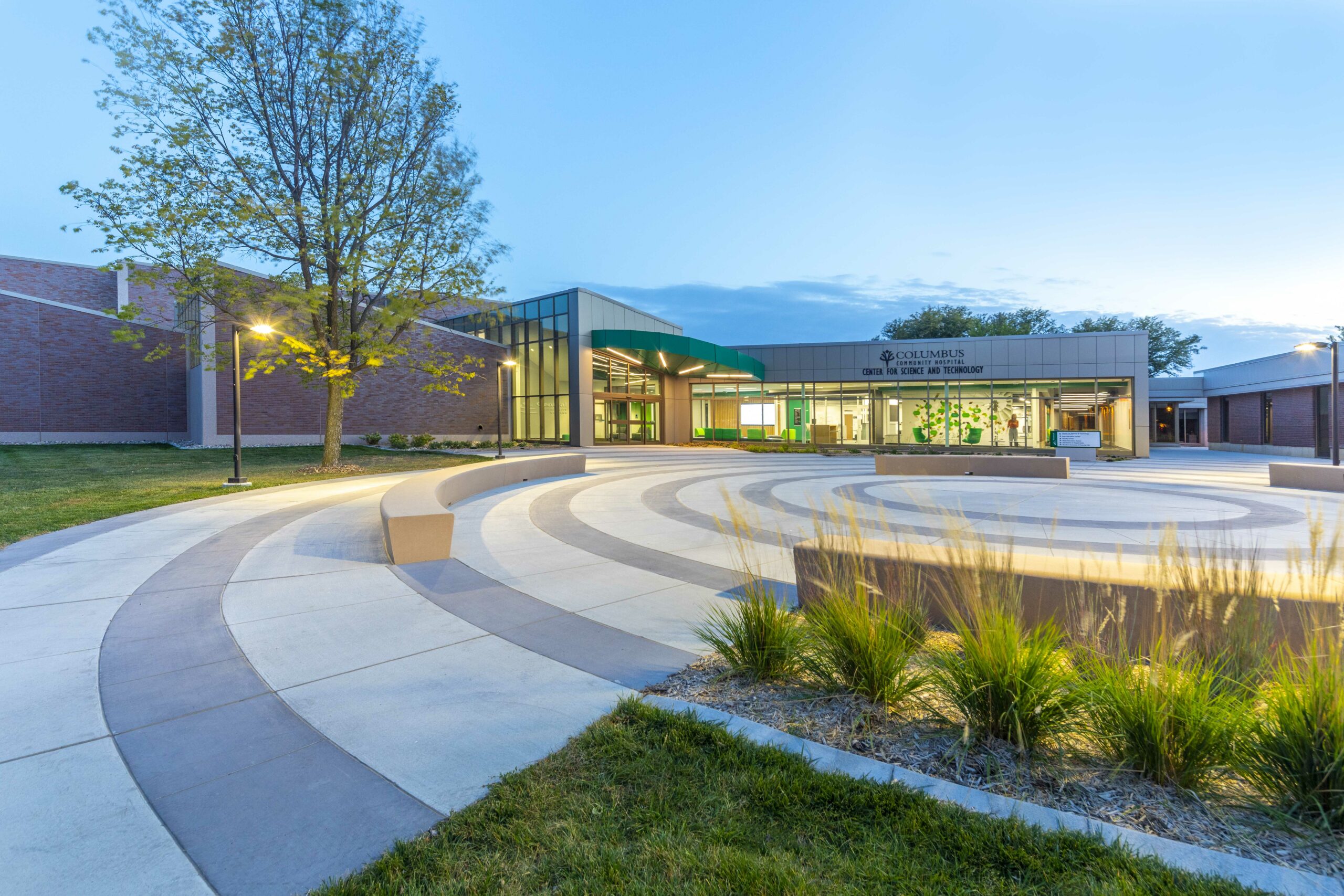Each year, ACEC Nebraska celebrates the best in engineering projects nationwide. This Engineers Week, the spotlight shines on the 2024 Engineering Excellence Awards, showcasing Farris Engineering’s Honor Award for the Central Community College Center for Science and Technology project. Dive into the story of how our dedicated team engineered the mechanical, electrical, plumbing, fire protection and technology systems for this remarkable addition and renovation.
An Innovative Approach
The entire project needed an innovative approach and application due to the age of the original building and the addition that almost doubles the existing space. One of the main mechanical upgrades was to combine the existing recently installed boiler/chiller system with an additional energy efficient HVAC system. Advanced control systems were used to seamlessly integrate both the new HVAC system and the existing boiler/chiller systems. This significantly enhanced the overall energy performance of the building while minimizing operational costs and environmental impact. It supplied the Owner with a highly efficient heating and cooling system while providing occupants of the building a comfortable indoor environment.
Future Value
Central Community College is deeply connected to the community. It forges partnerships with local industries, offering students internships and valuable industry exposure. Furthermore, the Central Community College conducts STEM outreach programs to inspire the next generation of scientists and engineers, enriching the region’s talent pool. Farris Engineering’s design involved engineering technologies that can provide a comfortable and inviting learning atmosphere for Central Community College’s Center for Science and Technology. It not only equips students with the knowledge and skills necessary for success in science and technology but also nurtures their passion for discovery and innovation. The Center for Science and Technology’s impact on the region extends beyond education, fostering economic growth and driving progress in the broader STEM community.
Social, Economic, and Sustainable Design
The Center for Science and Technology facility is a testament to modernity, featuring collaborative learning spaces, well-equipped laboratories, and technologically advanced classrooms. Its integration into emerging technologies, such as virtual reality and artificial intelligence, provides students with unparalleled hands-on experience. Farris Engineering provided systems to complement the emerging technology of this learning space that are energy efficient, cost-effective and help reduce energy consumption. Occupants of the building are able to be more comfortable and outside air is delivered throughout the building for better indoor air quality.
Complexity
The Central Community College Center for Science and Technology project was a large addition and renovation to the existing building. The facility increased to an estimated 33,500 square feet, more than twice as large as the existing space. Because students were still occupying some of the classrooms during construction, the existing mechanical and electrical room had to stay operational. To accomplish this, temporary utilities were put in place and a detailed phasing plan constructed to keep the facility operational throughout construction. The mechanical system utilized standard HVAC equipment to maintain facility standards. Energy recovery systems were installed, and science classrooms contain specialty exhaust and equipment.
Fulfilling Owner and Client Needs
Working collaboratively with the Owner in overall project development was essential for the success of the project. The partnership between Central Community College and the design team ensured that the project aligned with the College’s vision, goals, and requirements while staying withing budget and timeline constraints. The Farris Engineering design team was able to utilize portions of the existing heating and cooling system as well as connecting some of the electrical loads to the existing service. This not only offered a cost-effective and practical approach but also leveraged the advantage of systems already integrated into the infrastructure. This approach was especially beneficial to the Owner considering long-term sustainability and operational efficiency.



Comments are closed